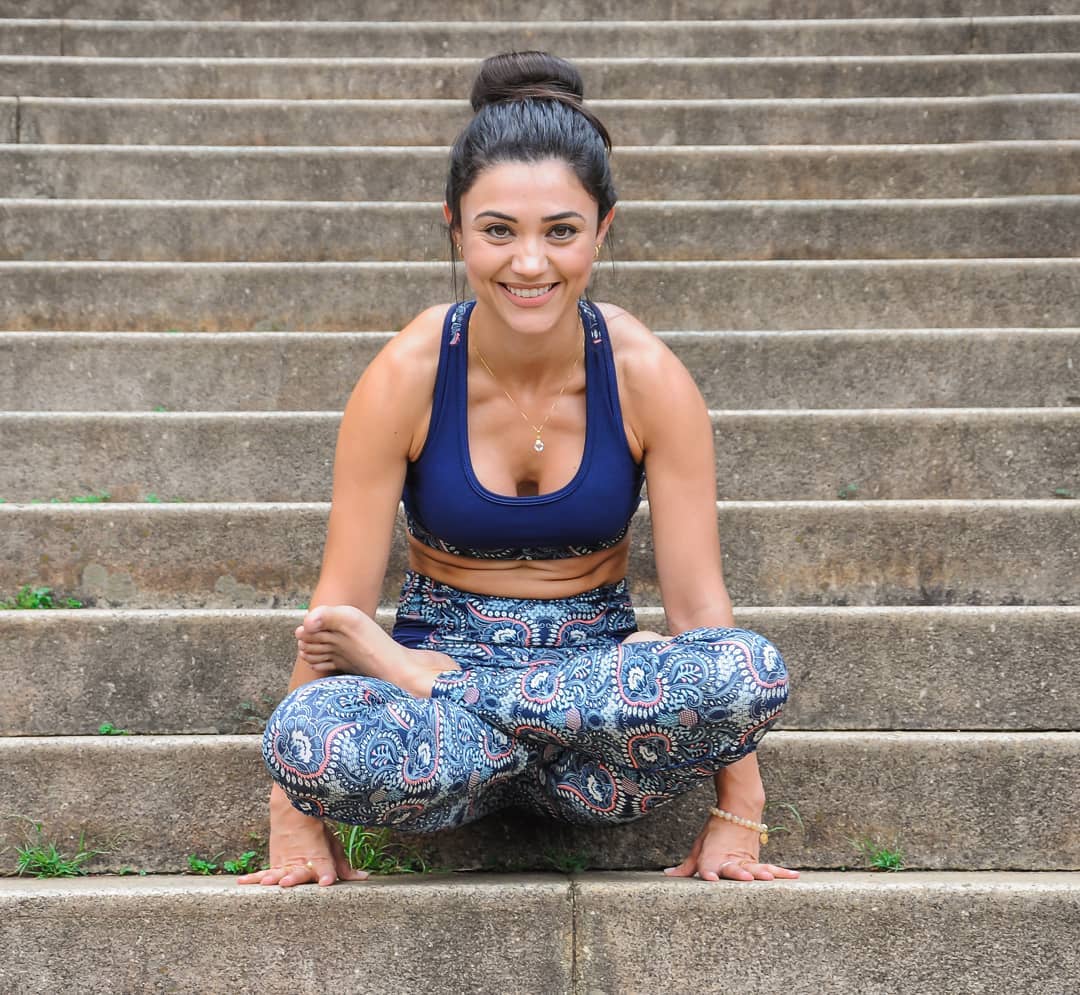Tulasana, also known as the Scale Pose or the Lifted Lotus Pose, is a seated balancing posture in yoga. It requires core strength and stability to hold the body in an uplifted position.
Tulasana is derived from the Sanskrit words “tula,” which means balance, and “asana,” which means pose or posture. The name reflects the pose’s emphasis on finding balance and stability.

Benefits:
- Enhanced Core strength: Tulasana strengthens the abdominal muscles, particularly the rectus abdominis, transverse abdominis, and obliques.
- Arm and wrist strength: This pose engages the muscles of the arms and wrists, improving their strength and endurance.
- Improved balance: Tulasana challenges your balance and requires concentration, enhancing your overall sense of balance and stability.
- Toned arms and shoulders: Regular practice of Tulasana can help tone and sculpt the muscles of your arms and shoulders.
- Increased focus and concentration: Balancing poses like Tulasana demand concentration, which can improve your mental focus and presence.
Steps to perform Tulasana:

- Start by sitting on the floor with your legs crossed in a comfortable seated position, such as Padmasana (Lotus Pose) or Sukhasana (Easy Pose).
- Place your hands on the floor beside your hips, with your fingers pointing forward.
- Press your hands firmly into the ground and engage your core muscles.
- Lift your body off the ground by straightening your arms. Your buttocks should be off the floor, and your body weight should rest on your hands and fingers.
- Keep your spine straight and your chest lifted. Relax your shoulders away from your ears.
- Engage your core muscles to maintain balance and stability.
- Hold the pose for a few breaths, gradually increasing the duration as you become more comfortable and stronger.
- To release the pose, gently lower your body back down to the floor, returning to the starting seated position.
Note: If you find it challenging to lift your entire body off the ground initially, you can start by practicing a modified version. Instead of lifting your body completely, focus on lifting your buttocks slightly off the floor while keeping your feet and legs grounded.
As with any yoga posture, it’s essential to listen to your body and work within your limits.
Avoid Tulasana
While Tulasana can provide numerous benefits, there are certain individuals who should avoid practicing this pose or proceed with caution.
Below are some cases in which it is advisable to avoid or modify Tulasana:
- Wrist or shoulder injuries: Tulasana puts significant weight on the wrists and shoulders. If you have any acute or chronic wrist or shoulder injuries, it’s best to avoid this pose or modify it to reduce strain on those areas. You can try practicing a modified version where you keep your hands on blocks or use props for support.
- Weak core or abdominal muscles: Tulasana requires a strong core to maintain balance and stability. If you have weak abdominal muscles or are recovering from abdominal surgery, it is recommended to avoid this pose until you have developed sufficient strength.
- Pregnancy: Pregnant women should be cautious when practicing Tulasana. As the abdomen grows, it can alter the center of gravity and affect balance. It is advisable to consult with a qualified prenatal yoga instructor for modified poses that are safe during pregnancy.
- High blood pressure: Women with high blood pressure should approach Tulasana with caution. The pose can generate a significant amount of pressure in the upper body, which may not be suitable for those with uncontrolled high blood pressure. If you have hypertension, it is best to consult with a healthcare professional before attempting this pose.
- Recent abdominal surgery: If you have recently undergone abdominal surgery, such a C-section, it is best to avoid Tulasana until you have fully healed. The pose can strain the abdominal muscles and interfere with the healing process.
If you have any concerns or specific health conditions, it is recommended to consult with a healthcare professional or a qualified yoga instructor for personalized guidance.
Disclaimer
The Content is not intended to be a substitute for professional medical advice, diagnosis, or treatment. Always seek the advice of your physician or other qualified health provider with any questions you may have regarding a medical condition.